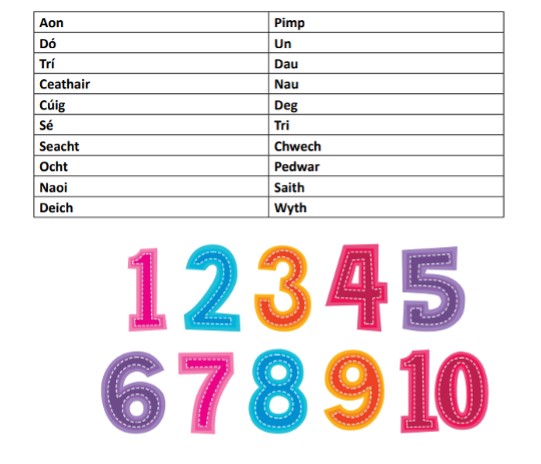!!!! Blog 3: Why wouldn’t you learn Irish? Exploring the creative possibilities of language learning
In her latest blog, Dr Claire Dunne, Head of English and Irish at Marino Institute of Education, continues her series on the creative role of language.
Why wouldn’t you learn Irish? Exploring the creative possibilities of language learning
Learning Irish impacts on many dimensions of our identity and our relationships with others. The language journey doesn’t stop at the school gates but can include other important people in our lives.
Learning Irish is important for classroom relationships and wellness
The Irish lesson is a space during the week where children can speak about their own lives and experiences. Think about some of the themes that are woven into the teaching of Irish – Mo chaitheamh aimsire, Mo mhuintir. These themes create important opportunities to develop self-awareness, and to acknowledge the diverse experiences children have within and outside of school.
Learning Irish provides opportunities for parental and family involvement
When children begin formally learning Irish in primary school, parents and families also have the opportunity to engage and / or re-engage with the language. Sharing experiences of learning Irish, or another language, can support a child’s language journey. Try some of the playful activities at home that are in the resource Gaeilge sa Bhaile.
Learning Irish is important to get to know yourself and others
Speaking or using another language allows you to get to know another side of yourself. It offers the potential to develop more creative and linguistic talents. Sometimes you are less articulate or funny in an additional language compared to your mother tongue, but this is a rich and humbling experience getting to know this more vulnerable part of yourself. It can help you relate more to other additional language speakers.
Speaking Irish connects you to other generations of Irish speakers, and also helps you become part of an international community of plurilingual speakers. Learning Irish provides opportunities for creative growth and can impact positively on many dimensions of our life and development.
So why wouldn’t you learn Irish?
!!!! Blog 2: Dr Claire Dunne, Head of the English and Irish Departments at Marino Institute of Education
Why wouldn’t you learn Irish? Exploring the creative possibilities of language learning
In her second blog post of the series, Dr Claire Dunne explores how learning an additional language has been shown to have many benefits, including the development of creative and flexible thinking, helping us make connections, as well as supporting future language learning.
Learning Irish gives us different perspectives
Insights from the Irish language can help us have a nuanced understanding of the world. Think of how feelings and emotions are described in Irish. Tá áthas orm. Tá fearg orm. In Irish you can say that a feeling comes on you and then leaves. This is an interesting perspective showing that feelings can be transient and don’t have to define us.
Oide and Buime are the original words for teacher in Irish. They are also synonyms for foster parent. The full meaning of our role as educators is encapsulated in this Irish term and serves as a reminder to care for children beyond their academic achievement.
Learning Irish is important to foster a connection with our environment
It is no surprise that the places in the world with the largest degree of biodiversity also have the largest range of languages spoken, e.g. Papua New Guinea. Living sustainably is linked to a respect for diversity in both our physical and social environment.
Proverbs and idioms in Irish have an enduring importance. As we see in the examples below, they often relate to the landscape and help us to explore how our ancestors came to understand and live in harmony with their environments, and how we can draw on that wisdom today.
Éist le fuaim na habhann agus gheobhaidh tú breac.
An té nach gcuirfidh sa earrach ní bhainfidh sé san fhómhar.
Ní hé lá na gaoithe lá na scolb.
Learning Irish helps us make connections with other languages
Irish is often the first additional language that a child encounters and so this experience lays the foundation for future language learning experiences. Learning Irish helps contributes to our entire linguistic repertoire. The journey that Irish speakers made to different corners of the world meant that the language mixed with and was enriched by other languages. Equally, Irish the language has been influenced by the communities that came to the island. Word for navigation and travel came into the language with the arrival of sea-faring Vikings, for example.
Irish has some similarities with other indigenous Celtic and languages (e.g. Cant, Welsh, Scots Gaelic). Try using your Irish-language skills to help you count to 10 in Welsh! The numbers 1-10 are in Irish in the lefthand column. The numbers 1-10 are in Welsh are in the righthand column but they are not in the correct order! Can you see any similarities between the numbers in Irish and Welsh (and other languages) that will help you match the Irish and Welsh numbers.

Have a look at more activities to explore the connections between the Irish language and living sustainably in Sceitimíní (Cuid 5).
Have a look at more activities to explore the connections between the Irish language and other languages in Léitheoirí Líofa (Cuid 8) and Sceitimíní (Cuid 4).